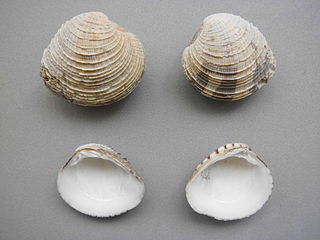Chione, or Khione may refer to:

In Greek mythology, Daedalion was a son of Hesperos, or Lucifer, and the brother of Ceyx. Ceyx describes his brother Daedalion as a great warrior, full of courage and vigour but acknowledged that he could also be harsh, relishing the cruelty of war. The story of Daedalion's life is told mainly in Ovid's Metamorphoses though passing references can be found in other classical works. It is possible the story may have originated with Boios. In the tale Daedalion, grief-stricken following the death of his daughter Chione, attempts to cast himself off Mount Parnassus only to be transformed into a hawk by Apollo.
In Greek mythology, Autolycus was a successful robber who had even the power of metamorphosing both the stolen goods and himself. He had his residence on Mount Parnassus and was renowned among men for his cunning and oaths.
Benthesikyme or Benthesicyme in Greek mythology, according to the Bibliotheca, was a daughter of Poseidon and Amphitrite and wife of Enalos, by whom she had two daughters. She raised Eumolpus, son of Chione and Poseidon.

Callista chione, the smooth clam, is a rather large, temperate, marine, bivalve mollusc that inhabits sandy bottoms or with small pebbles in clean waters down to about 200 m from the British Isles to the Mediterranean. The shell can reach up to about 110 mm Ø, its outer side is smooth and ranges from light greenish creamy colour to medium brown, probably varies to match the background; the interior is white to soft pink. The concentric and radial growth lines are easily seen. Callista chione is edible, different dishes are prepared throughout the Mediterranean in Spain, Italy, France, the Balkan and the Maghreb countries.

Venus is a genus of small to large saltwater clams in the family Veneridae, which is sometimes known as the Venus clams and their relatives. These are marine bivalve molluscs.

Chione cancellata, is a species of medium-sized saltwater clam, a marine bivalve mollusc in the family Veneridae, the venus clams.

Chione is a genus of American tropical marine bivalve molluscs, in the family Veneridae.
Chione is a monotypic genus of flowering plants in the family Rubiaceae containing the single species Chione venosa. It is native to the neotropics, occurring in most of Mexico, and throughout Central America, the Caribbean, Colombia, Ecuador, and Peru. It is typically a tree growing 10 to 20 meters tall. In harsh habitats, it may be dwarfed and shrubby. It has no known economic use.

In Greek mythology, Chione was the daughter of Boreas, the god of the north wind, and Orithyia a daughter of Erechtheus, king of Athens.

Hamelieae is a tribe of flowering plants in the family Rubiaceae and contains about 171 species in 6 genera. Its representatives are found in tropical and subtropical America. The sister tribe Hillieae is sometimes here included.
Eois chione is a moth in the family Geometridae. It is found in Brazil.

The Death of Chione is a 1622 painting by Nicolas Poussin, his first known surviving work. He produced it during a stay in Lyon and in February 2016 it was acquired by that city's Museum of Fine Arts. It shows the death of Chione, lover of both Hermes and Apollo - she had compared her beauty to that of Apollo's sister Artemis, who hunted her down and killed her by shooting an arrow through her tongue.
In Greek mythology, Chione or Khionê may refer to the following women:
Chione erosa is an extinct species of bivalve in the family Veneridae. They are found from the late Pliocene to the Pleistocene of Florida, South Carolina, and North Carolina.

Chione elevata, the Florida cross barred venus, is a species of bivalve in the family Veneridae often confused for another species, Chione cancellata with a more southern distribution. It is native from the coasts of Florida to North Carolina.







